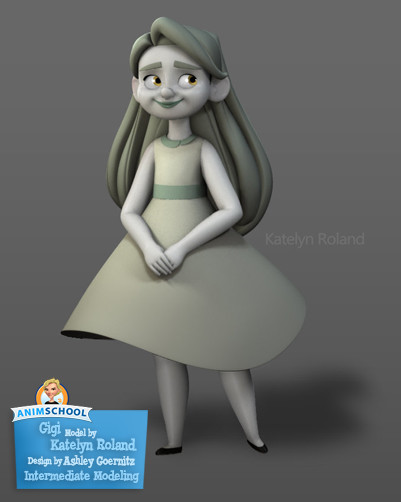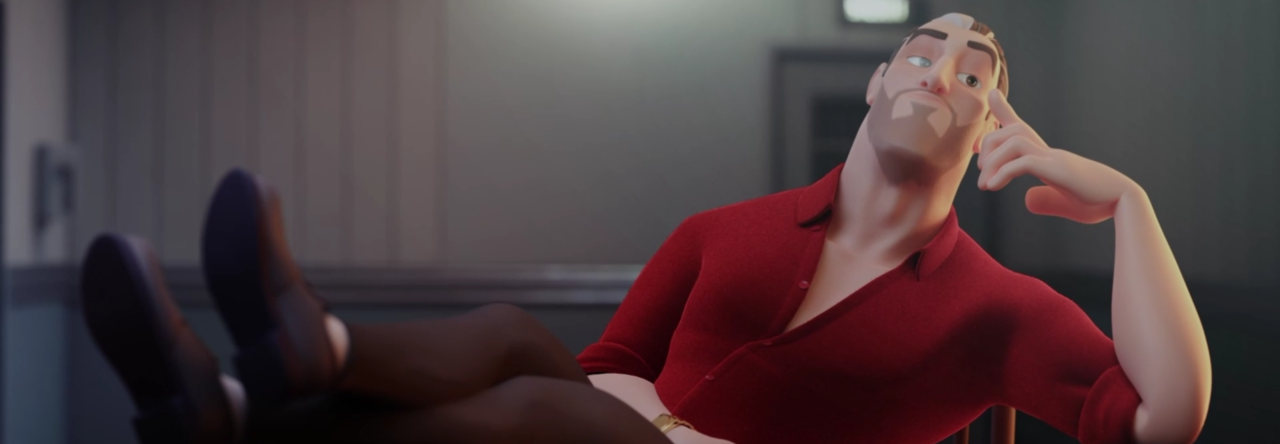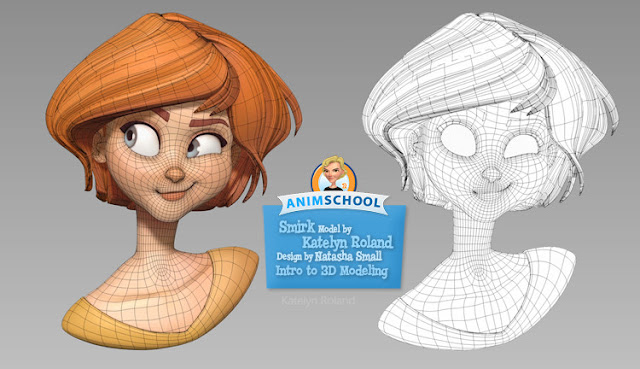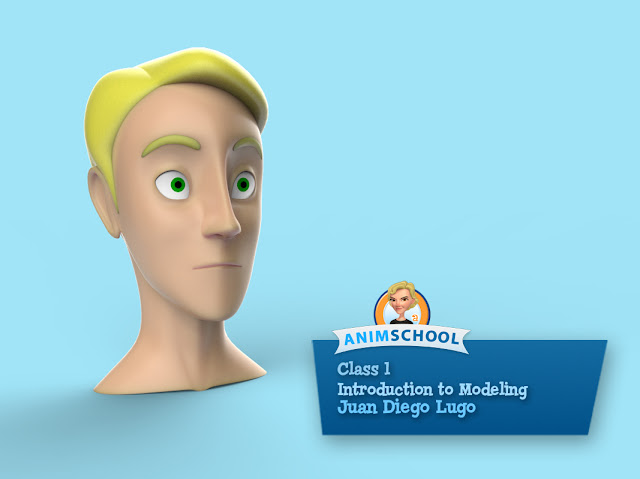We caught up with AnimSchool Student Juan Diego Lugo to ask him a few questions.
Juan has just completed his final course at Animschool. Since enrolling at AnimSchool in January 2014, his modeling skills have grown considerably. But don’t take our word for it, why don’t you take a look for yourself?
1. How has AnimSchool helped you grow as a modeler?
AnimSchool simply provides an enormous amount of resources, knowledge and help for a modeler in the making. The impression that struck me from the very first introductory class was that modeling requires particularly keen attention to detail, as it is the convergence of design, technology, anatomy and craft. As I got to more advanced classes, this impression only solidified. As a result, our own judgement changes, we scrutinize things more, and we develop a deeper appreciation for good craft wherever we see it.
 On top of all of this, and what makes AnimSchool uniquely powerful in this regard, is that we have incredibly talented individuals giving us critique. Luis Labrador, Brien Hindman, Juan Pablo Chen, Dylan Ekren, and Dave Gallager to name a few. Amazing artists with real world experience who not only teach us concrete truths about modeling, but more profoundly, who they are as artists and humans ultimately changes you, it motivates you and inspire you to push for better work – you only need to put in the time.
On top of all of this, and what makes AnimSchool uniquely powerful in this regard, is that we have incredibly talented individuals giving us critique. Luis Labrador, Brien Hindman, Juan Pablo Chen, Dylan Ekren, and Dave Gallager to name a few. Amazing artists with real world experience who not only teach us concrete truths about modeling, but more profoundly, who they are as artists and humans ultimately changes you, it motivates you and inspire you to push for better work – you only need to put in the time.
I guess it’s hard not to improve when you surround yourself and learn from these deeply influential artists, and really talented classmates who become your friends along the way. I guess every school or service or enterprise boils down to how good its community is, and I’ve found that this community is as kind and receiving as it is talented.
2. Tell us about yourself and how you got into 3d
I was born in Venezuela and lived there until I was 17. Getting a computer from a very young age exposed me to a whole new world of animated games and digital art, and it didn’t take long for me to start learning how to create things. Eventually I found happiness in doing that.
Venezuela, even then, was a dangerous country. But here I had an escape from it with technology and art!
Sometime growing up I also met someone who was very influential in my life, and whom I admire. He studied 3D and was able to do amazing drawings and animations, and I think he gave me the confidence and the necessary mentorship to start playing with different 3D programs like Blender, Maya, and Cinema4D.
3. Are you currently working in the industry?
I’ve been working for a little over a year remotely as a Rigging Artist for a studio based in California. Still, I would like to find something where I can be on site as well, perhaps something more involved. I’m hoping I can do that soon, after graduating and producing a new demo!
4. So you can rig and model! How has knowing both fields benefited your work?
I’ve been able to fill out gaps between modeling and rigging. I think knowing two areas deeply related to one another gives you a competitive edge, and the freedom to just do more or be more useful.
In my work environment I’m more critical of topology and how important good topology is for deformations, (specially in gaming where there are limitations from the engine) and that can potentially save you and others quite a lot of time.
5. Tell us about your tank girl model!
Well – the concept for her was made by Cory Loftis and when I first saw it, it really hit me. It has so much personality. Then it was just a matter of doing it, and Advanced Modeling in ZBrush was the key to learning how. Over the course of 11 weeks, we gathered references and started going for it. Our instructor was incredible, and we would get just on point critique and lessons on how to improve.. this process happened again and again, until she was finished, and even though I’m very happy with the result, I’m even happier of the things I learned, because it opens the door to a world of characters we can take on the challenge of doing in 3D.
6. Care to share one of the things you learned?
I gave this one some thought.
When working on a model or a project, the last 10% of the work takes as much as the last 90% of it.
It’s simple but profound – we often feel like something is finished when we could push it so much more.
The last 10% takes as much time and effort as the 90% that led to it.
7. So have you ever revisited one of your models you once called complete?
I haven’t, at least not yet. I feel more inclined to take on new projects with what I’ve learned from past mistakes – and this stills in me a sense of excitement as well. But it is in no way a bad idea, and it is ultimately necessary. For example, for my next demo reel, I’m sure I will have to revisit and mend a lot of things if I plan to present them next to newer, better projects, or else I run the risk of people thinking I have bad judgement or bad taste.
8. Do you have foundation skills in traditional forms of art?
Yes, I have a bachelor in fine arts, which sounds loftier than it is. I learned to draw using charcoal, but we also learned clay sculpting and baking. Even though I don’t use traditional mediums anymore, I wish I still did. Yet every bit helps and reinforces
3D skills, I think.
9. You’ve made some great progress since taking your first class at AnimSchool. Do you have any advice for those who are just starting out?
Yes, absolutely. I would urge everyone to try to connect beyond the classes with the other students that are putting in their time and effort. In my case, a few of the people I met on my first class accompanied me until the later ones, and doing google hangouts with them allowed us to critique each other while working on our projects, and that was great! I’d also recommend trying to do every art class, even if you don’t draw; you will learn a lot. Lastly, I’d recommend taking advantage of the general reviews available during the week, because the feedback is very, very useful.
10. Thank you, Juan. Any last words for our readers?
I think I’d just like to add one last comment.
And it’s to echo a tweet from one of my instructors here. He said we are responsible for our own success. And I think it’s awfully true. It’s easy to fall on the trap of thinking there are magic buttons, techniques or plugins or software, but it comes down to discipline and determination and love for the craft.
———–
Thank you, Juan Diego Lugo for allowing us to share your progress and for taking the time to speak with us! If you’d like to see more examples of Juan Diego Lugo’s work, check out his
ArtStation !
 Was there any time while learning 3D that you felt overwhelmed or wanted to give up? How did you overcome it?
Was there any time while learning 3D that you felt overwhelmed or wanted to give up? How did you overcome it?
 Was there any time while learning 3D that you felt overwhelmed or wanted to give up? How did you overcome it?
Was there any time while learning 3D that you felt overwhelmed or wanted to give up? How did you overcome it? We can see from your beautiful 3D models that you’ve grown a lot since starting Animschool. How do you think you’ve improved as a modeler?
We can see from your beautiful 3D models that you’ve grown a lot since starting Animschool. How do you think you’ve improved as a modeler?

























